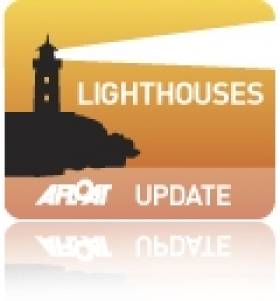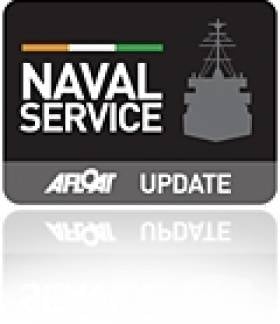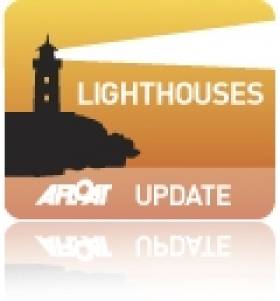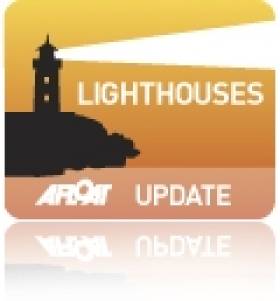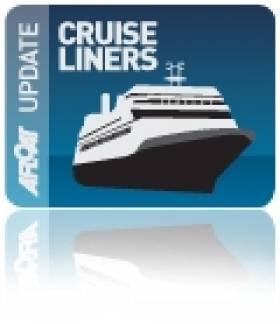Displaying items by tag: Loop Head
Loop Head Lighthouse Proves Major Tourism Draw
#lighthouse – Up to Monday (13 August 2012), 9691 adults and 2870 children had visited the historic West Clare landmark at Loop Head.
Clare County Council, along with Shannon Development, Loop Head Tourism and the Commissioners of Irish Lights (CIL), opened the 19th century lighthouse to the public for the second successive summer season in May. It is estimated that the 11-week trial opening scheme in 2011 was worth approximately €400,000 to the local economy.
Loop Head Lighthouse, located at the mouth of the Shannon Estuary, is steeped in history and rich in maritime heritage with its origins dating back to the 1670s. The existing tower style lighthouse was constructed in 1854 and was operated and maintained by a keeper who lived within the lighthouse compound.
Taoiseach Enda Kenny's grandfather was a keeper at the lighthouse. James John McGinley took up duty at the Lighthouse as Principal Keeper on 16th January 1933. He spent 1 year and 10 months at Loop Head. He was transferred from the station in October 1934. In January 1991, the lighthouse was converted to automatic operation, and today is in the care of an attendant and is also monitored by the CIL.
"The visitor figures are extremely encouraging and highlight the huge interest that exists amongst members of the public in Ireland's rich maritime heritage," explained Ger Dollard, Director of Services, Clare County Council.
He added: "The opening of the Lighthouse to the public has provided a significant boost to the local economy in the Loop Head Peninsula and wider West Clare region. The success of the project underlines the continued growth in the heritage tourism sector, as also evidenced by the recent reopening of Ennis Friary."
Mr. Dollard noted that the introduction this year of a new interpretative exhibition at Loop Head Lighthouse has helped to sustain the success of the trial opening scheme in 2011.
The exhibition, all materials and labour for which were sourced locally, focuses on the history of Irish lighthouses and the people who have operated them since the 17th century.
"With our project partners at Shannon Development, Loop Head Tourism and the Commissioners of Irish Lights (CIL), Clare County Council looks forward to the continued success of this project," Mr. Dollard concluded.
Loop Head Lighthouse will remain open to the public up to 3rd September 2012
Loop Head Lighthouse Hits the Air Waves
#lighthouse – Loop Head Lighthouse in County Clare will be amongst hundreds of lighthouses and lightships worldwide to participate in a unique event aimed at promoting public awareness of lighthouses and lightships and their need for preservation and restoration.
The Limerick Radio Club, comprising members from Limerick, Clare, Kerry and Tipperary, will broadcast non-stop for 48 hours from the West Clare Lighthouse on August 18-19th as part of the 15th International Lighthouse /Lightship Weekend (ILLW). During the broadcast, visitors to the lighthouse will be able to listen into communications with some of the other participating ham radio operators broadcasting from 400 other lighthouses and lightships in 50 countries.
The annual event, which is conducted under the sponsorship of the Ayr Amateur Radio Group (AARG) in Scotland, is always held on the third full weekend in August starting at 0001 UTC on Saturday and finishing at 2359 UTC on Sunday. It also coincides on the Sunday with International Lighthouse Day, an event organised by the Association of Lighthouse Keepers whereby many world lighthouses are open to the public for the day.
Ireland will be represented by Lighthouses at Loop Head (Clare), Roches Point (Cork), St John's Point (Down), Cromwell Point (Kerry) and Blacksod (Mayo).
Simon Kenny, Chairperson of Limerick Radio Club, explained: "The club, which was founded in 1946, has a long association with the Lighthouse Weekend and this year, for the first time, we are privileged to be allowed to operate from Loop Head."
Mr. Kenny added: "We hope to open long distance communications with regions in Asia, through Europe, North and South America, Australia and New Zealand. A special QSL Card (confirmation of communication) has been designed to mark the event. Club membership is open to individuals from all walks of life who are interested in radio communications, electronic construction and antenna design. The club will operate two stations, one of which will be at the entrance to the Lighthouse so members of the public can listen to some of the transmissions. Our web site is www.limerickradioclub.ie ."
Clare County Council, along with Shannon Development, Loop Head Tourism and the Commissioners of Irish Lights (CIL), has sanctioned the broadcast from Loop Head Lighthouse by the Limerick Radio Club. The Club has also received approval from the Communications Regulator.
According to Ger Dollard, Director of Services, Clare County Council: "We wish the members of Limerick Radio Club the very best of luck over the weekend. Their participation in this initiative helps to raise public awareness of Loop Head Lighthouse and other similar facilities across the world, while at the same time helps to promote amateur radio and to foster international goodwill."
Loop Head Lighthouse, located at the mouth of the Shannon Estuary, is steeped in history and rich in maritime heritage with its origins dating back to the 1670s. The existing tower style lighthouse was constructed in 1854 and was operated and maintained by a keeper who lived within the lighthouse compound. In January 1991, the lighthouse was converted to automatic operation, and today is in the care of an attendant and is also monitored by the CIL.
The Lighthouse has reopened to the public this summer, following a successful trial scheme in 2011 that resulted in an estimated 17,000 people visiting the landmark building.
Fishery Detentions off Clare Coast
#FISHERY DETENTIONS – Yesterday the Naval Service OPV L.E. Aisling (P23) detained an Irish registered vessel approximately 125 nautical miles off the coast of Loop Head, Co. Clare. The detention was in relation to an alleged breach of technical fishing regulations.
The vessel was to be escorted by the OPV to arrive in Castletownbere this morning and then and handed over to the Gardaí.
Also earlier this month, the LPV L.E. Niamh (P52) detained another vessel on the same grounds. On that occasion the detained French registered vessel was likewise fishing in waters off Loop Head and taken under escort to the Co. Cork fishing harbour.
According to Naval Service figures, they have carried out 910 boardings, issued 38 warnings and detained 11 vessels so far this year.
Taoiseach Opens Loop Head Lighthouse
#LIGHTHOUSES – Taoiseach Enda Kenny, T.D., today officially opened the new exhibition at Loop Head Lighthouse and launched the 2012 visitor season at the historic West Clare tourist attraction.
Loop Head Lighthouse, located at the mouth of the Shannon Estuary, is steeped in history and rich in maritime heritage with its origins dating back to the 1670s. The Taoiseach's grandfather was a keeper at the lighthouse. James John McGinley took up duty at the Lighthouse as Principal Keeper on 16th January 1933. He spent 1 year and 10 months at Loop Head. He was transferred from the station in October 1934.
Clare County Council, along with Shannon Development, Loop Head Tourism and the Commissioners of Irish Lights (CIL), conducted a successful 11-week trial opening scheme in 2011 that resulted in an estimated 17,000 people visiting the landmark building. It is estimated that the trial opening of the Lighthouse was worth approximately €400,000 to the local economy.
Earlier this year, Shannon Images was appointed to produce an interpretation plan that would further enhance the overall visitor experience at the lighthouse. An exhibition focusing on the history of Irish lighthouses and the people who have operated them since the 17th century has been installed for the 2012 tourist season. All materials and labour for the project were sourced locally.
Speaking at the opening, the Taoiseach said: "The opening of the 2012 visitor season at Loop Head Lighthouse marks a special day for tourism in Ireland and for the people of West Clare. It's an equally special day for me and my family. Because as I made my way here today, I was acutely aware that my journey was also a family journey. A journey that began 80 years ago, when my grandfather, James McGinley, arrived here to become the Principal Keeper at Loop Head."
Speaking at today's official opening, Mayor of Clare Councillor Pat Hayes said the Taoiseach's visit to the lighthouse was testament to the contribution made by the Lighthouse to the local community and economy since the trial opening in 2011. Mayor Hayes noted that heritage tourism could play a significant role in the revival of the domestic tourism sector.
"The collaborative approach adopted by regional development agencies and the local community to enhancing the visitor experience at Loop Head is a model that could and should be replicated elsewhere throughout County Clare and, indeed, the rest of Ireland. Heritage tourism is becoming increasingly popular throughout the world and therefore, we should consider the possibility of opening up and promoting some of other many existing heritage sites and structures that currently remain inaccessible to the public", stated Mayor Hayes.
According to Ruairi Deane, Shannon Development Tourism Product Development Executive: "Shannon Development is delighted to have worked with our partners on this unique and exciting project. The overall objective of the project partners has been to develop the Lighthouse as an anchor tourism attraction in West Clare with the potential to attract more visitors and generate additional revenue for the area, and we believe today's official opening by the Taoiseach is another major step in fulfilling this aim. The new exhibition uses a wonderful blend of multi-media to tell the story of Loop Head Lighthouse and the surrounding area."
Cillian Murphy, Chairman of Loop Head Tourism said: "The lighthouse visitor project builds on the designation of the Loop Head Peninsula as a 'European Destination of Excellence' (EDEN) by the European Commission and also links to other community projects such as the recent restoration of the World War 2 'EIRE' sign nearby. These community initiatives complement the lighthouse project and will further reinforce the Loop Head peninsula as a quality sustainable tourism destination. Tourism development on the peninsula will affect all who live here and Loop Head Tourism have shown what can be achieved by developing our tourism products in conjunction with the peninsula community and our local authorities"
Mr. Murphy expressed confidence that the Taoiseach's visit and personal connection with the Lighthouse would help to attract visitors to the area during the coming months. "Tourism operators and accommodation providers are also working closely with each other to further develop the Loop Head Peninsula's growing reputation as a tourist destination for those that wish to have a different type of Irish holiday experience and our recent appointment of a 'Tourism Animator', which is funded by a Leader grant, gives us an opportunity to take another huge step in the right direction," Mr. Murphy concluded.
The existing tower style lighthouse was constructed in 1854 and was operated and maintained by a keeper who lived within the lighthouse compound. In January 1991, the lighthouse was converted to automatic operation, and today is in the care of an attendant and is also monitored by the CIL.
Loop Head Lighthouse officially opens to the public from tomorrow (Saturday, 19 May 2012) up to 3rd September 2012, creating 12 seasonal jobs. Visit www.loophead.ie
Loop Head Lighthouse Will Open To Public in 2012
#LIGHTHOUSES - Loop Head Lighthouse in Co Clare, is set to re-open to the public later this year following a successful trial scheme last summer.
As The Irish Times reports, Clare County Council opened the lighthouse for an 11-week trial period last July with the support of the Commissioners of Irish Lights, Shannon Development and Loop Head Tourism.
Some 17,000 people took up the invitation to visit the 23-metre beacon, which is still in use as a navigational aid, as previously reported on Afloat.ie.
The consortium is now looking for consultants to help expand tourism the facility with an exhibition and interpretation plan.
Masterplan for Shannon Foynes Port Company
Port expansion options are to be examined so to prepare ports for larger trade volumes when the opportunities arise. Also under consideration are the non-core assets at the Port of Foynes and Limerick Docks. To read more about the masterplan and the challenges and issues that has been identified in both ports click HERE.
The statutory jurisdiction of the estuary is under the control of SFPC, which is responsible for the estuary that runs from the mouth entrance marked by Kerry and Loop Heads and stretching far inland to Limerick City. The natural waterway can handle vessels of up to 200,000 deadweight tonnes (dwt) which are the largest ships that can dock in Irish waters.
Loop Head: A Guiding Light for Foynes-Bound Cruise Calls
Her arrival will be followed by P&O Cruises latest addition Adonia on Saturday. With 710 berths the 30,000 tonnes vessel is the smallest of the seven-strong fleet which can accommodate between 1,800 and up to 3,100 passengers as in the case of the Azura. The 115,000 tonnes vessel departed Dublin Port this evening. Her first call to the port was last year (click HERE) and she is the largest cruise ship to call to the capital.
On Tuesday of next week the 9,000 tonnes Spirit of Adventure (cruises) marks the third cruise caller to Foynes. The port is along with five other terminals located throughout the country's largest estuary are operated by the Shannon Foynes Port Company (SFPC).
Incidentally Spirit of Adventure and Azura where two of another trio of cruise ships that visited the Port of Cork on Monday, with Holland America Line's 59,000 tonnes Rotterdam forming the third vessel. This was the first occasion that Cork has handled this number of cruise ships on a single day, bringing 7,000 passengers which set a new record for the port.
- Shannon Estuary
- Shannon Foynes Port Company
- P&O Cruises
- Loop Head
- Cruiseships
- lighthouses
- Dublin Port news
- Holland America Line
- Port of Cork News
- Le Diamant
- Cruiseliners
- Spirit of Adventure
- Shannon Estuary news
- Loop Head Lighthouse visitor centre
- Azura cruise ship
- Spirit of Adventure cruiseship
- Adonia cruiseship
- Rotterdam cruiseship
- Loop Head Lighthouse
- Shannon Estuary and River
- Shannon Estuary and River news
- Lighthouse news
- Irish cruise calls
- Irish ports of call
- Foynes Port
Message in a Bottle Washes Ashore at Loop Head
When Adam Flannery joined his family on holiday to Kilbaha, Co Clare this summer, little did he know that he would be assisting in a school science project that began some 6,000km away.
Yet that's exactly what happened when the 17-year-old picked up a message in a bottle on the beach at the Loop Head peninsula village.
"It was washed up on the shore, over the wall from Keatings Pub,” Adam's father Steve Flannery told the Clare Champion. “It was just an ordinary green wine bottle with a sealed rubber cork on it."
But the bottle was part of a study of ocean currents conducted by a science class at Melbourne High School, on the east coast of Florida, USA.
Adam followed the instructions inside to contact the school and give them the good news. Melbourne High science teacher Ethan Hall confirmed that the find was the first to cross the Atlantic in the four years he's conducted the project.
The bottle was thrown into the water close to the Gulf Stream in late April 2009 before beginning an incredible 16-month journey to west Clare at the mouth of the Shannon. It's currenty with the Flannery family at their home in Athlone, but they plan to return it to Kilbaha next summer.


























